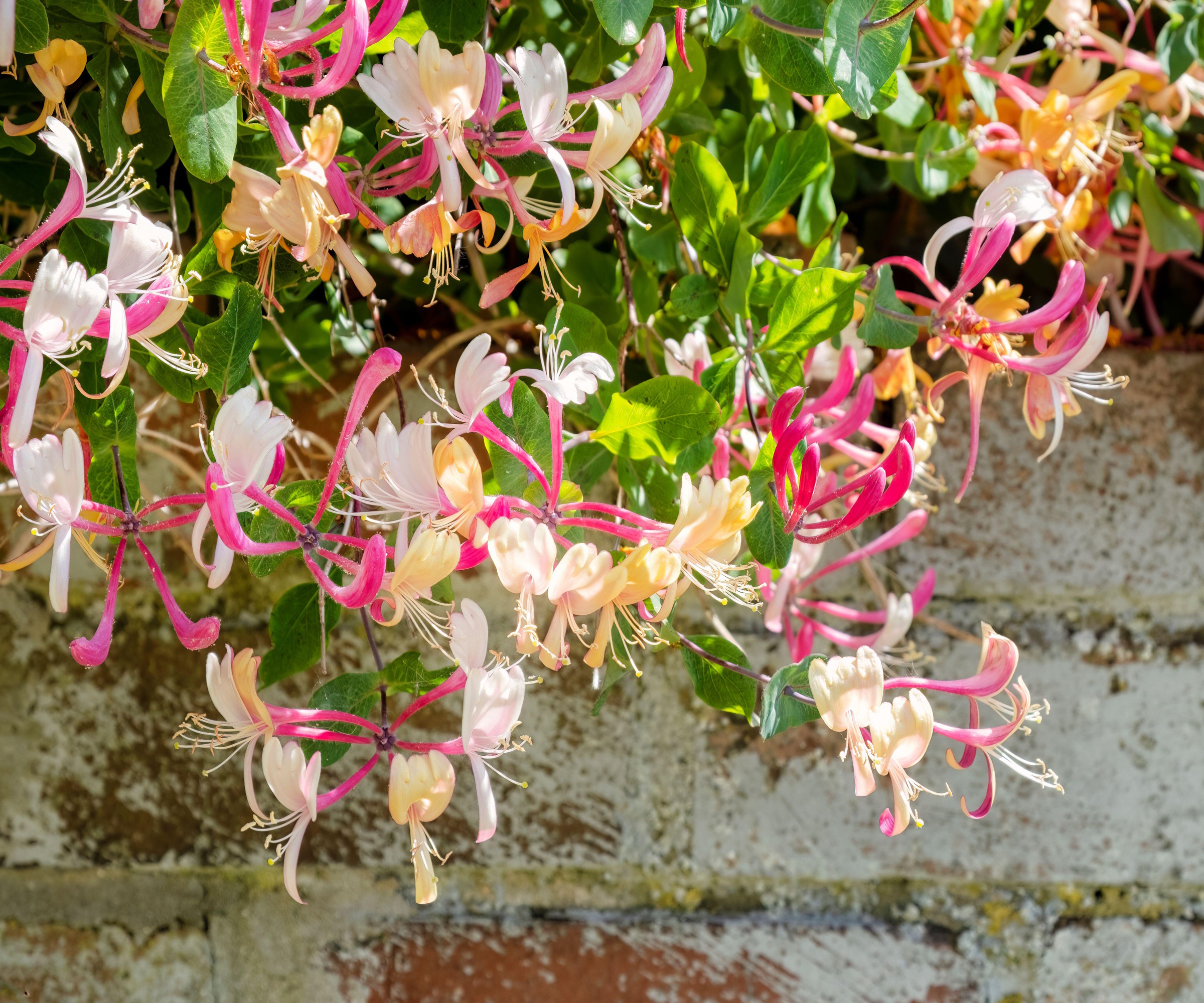
Honeysuckle is a popular climbing plant celebrated for its fragrant and unusual blooms. In the right conditions, honeysuckle plants can grow at quick rates of two to three feet per growing season, rapidly filling garden walls and fences with yellow, white, pink or red flowers.
Honeysuckle can be grown in containers, meaning that even if you have a small yard, patio, or even balcony, you can easily add vertical interest to your space. Adding honeysuckle to your outside area will prove popular with both gardeners and pollinators alike, including bees, butterflies and hummingbirds - and who wouldn't want to spot a hummingbird snacking on the nectar of a colorful flower during the summer?
So, why not learn how to grow honeysuckle in pots this year, and let this fast-growing climbing plant ramble along your garden walls, trellises and structures. Here, a garden expert reveals how to grow honeysuckle in pots to guarantee floral success in any space.

How to grow honeysuckle in pots
Honeysuckle is one of the best flowering climbers, renowned for filling large fences, walls or structures with fragrant blooms. If you are seeking container gardening ideas this year, why not try growing this popular plant in a pot? Growing honeysuckle is not complicated and, with the right care, this climber will provide months of enjoyment through spring and summer.
Growing advice for honeysuckle in pots

Honeysuckle plants are easy to grow in containers, so long as they enjoy the correct conditions. Honeysuckles tend to grow best from US hardiness zone 5 to US hardiness zone 10, thriving in part-sun-part-shade positions.
'Honeysuckle plants can readily be grown in pots,' says Drew Swainston, expert gardener and content editor for Homes & Gardens. 'They prefer dappled shade, so it is a good idea to position your pot somewhere in the yard that has morning or afternoon sun, not both.'
In terms of soil, it is best to fill your pot with a 'moisture-retentive, humus-rich soil,' Drew adds. 'Remember that pots and containers can quickly dry out in the summer months, so using an organic compost combined with some mulch will retain moisture, helping your honeysuckle to thrive.' Organic potting soil is available from Walmart.
'Honeysuckle plants can be vigorous growers and will require support,' continues Drew. 'There are many climbing plant support ideas to choose from, but I would recommend using a trellis, archway or homemade structure that will allow your honeysuckle to ramble and vine.' Supports and structures are available from Walmart.
As your honeysuckle grows, be sure to tie in new growth where you want your climber to grow. 'As well as tying in, it is also important to regularly maintain and prune your plant,' Drew adds. 'Do not be afraid to snip away unwanted growth, and direct your plant to fill an intended area.' Pruning is best done after flowering, typically in late summer.
'Be sure to regularly water your honeysuckle pots during the spring and summer,' Drew continues. 'In warm weather, pots can dry out very quickly, so keep an eye on your pots every few days.'
Finally, it is also a good idea to apply a bloom booster fertilizer, available from Amazon, to encourage your honeysuckle to produce plenty of flowers. Feed throughout spring and early summer, stopping around August as blooming comes to an end.
Durable lightweight garden structure for your climbing plants. This design is sturdy yet lightweight and will help you to show off your prized climbers.
Recommended honeysuckle varieties for pots

Most honeysuckle varieties are suited to growing in containers, so it is down to your personal preference as to what you grow. Many of the best honeysuckles have colorful, vibrant blooms, so whatever you select, these climbers will add impact to your space.
Why not try the 'Gold Flame' variety, available from Walmart, which is a striking yellow and red type that would be an ideal option for colorful container growing? Or, for an unusual pick, why not consider growing one of the native honeysuckle plants, like Lonicera sempervirens?
Native trumpet honeysuckle plants, available from Amazon, have tubular red blooms and are known to be popular with hummingbirds. This variety is sure to fill your yard with fragrant blooms and encourage plenty of pollinators to stop by.
With white and magenta flowers, this honeysuckle will steal the show in your yard, filling the ait with sweet fragrance during summer.
FAQs
Are any honeysuckle species invasive?
Yes, unfortunately, several types of honeysuckle are considered invasive plants. Growing in pots is a good way to manage and maintain vigorous plants, but it is always best to consult with your local authority or government office to assess which species should and should not be grown in your region. For example, Lonicera morrowii, Lonicera maackii, Lonicera x bella and Lonicera japonica are considered invasive in different parts of the US and the UK, so do your homework before ordering any plants.
Why not consider growing honeysuckle as part of a garden hedge at the front or back of your home? With their fragrant, colorful blooms, honeysuckle plants can be incorporates as part of hedges for pollinators, attracting bees, birds and butterflies all summer long.







